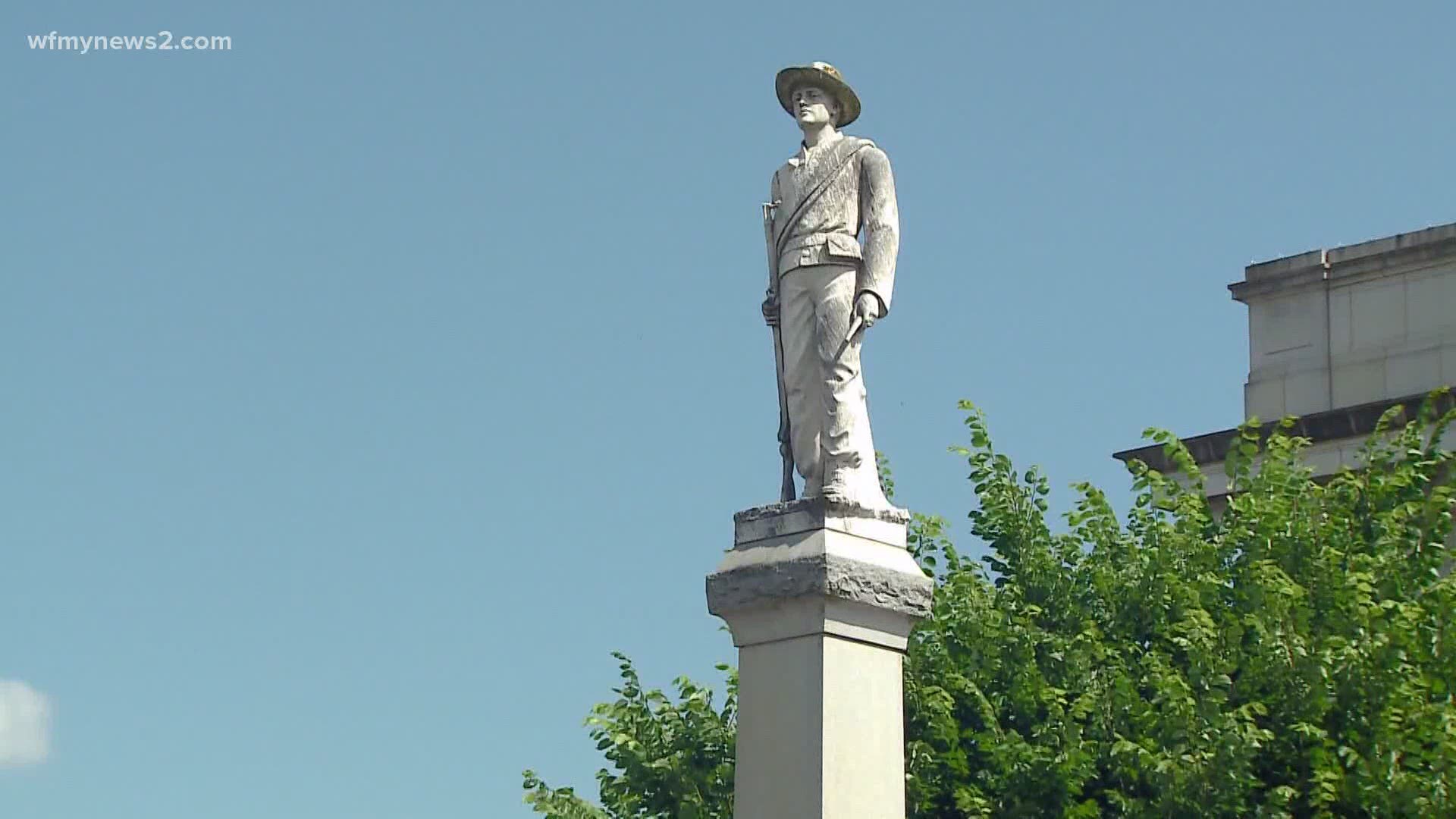GRAHAM, N.C. — Note: Above video is from a story when the Court first blocked the protest rules in July 2020.
The NAACP has gone back and forth with Alamance County for months. They first filed the lawsuit in July 2020. The City of Graham passed an ordinance requiring permits for protests on Courthouse grounds. Crowds of hundreds people had been gathering near the Courthouse following the death of George Floyd. On Tuesday, the two sides settled the dispute effectively putting the case to rest.
Before we walk through the history of this case, we need to break down Tuesday's settlement and what it means for the future of protests and demonstrations near Alamance County's Historic Courthouse.
The Court ruled to officially recognize several areas around the Courthouse as public forums:
- The north, south, east and west steps
- The lawns between the sidewalk and the Courthouse
- The sidewalk that goes around the Courthouse, as well as the walkways connecting the sidewalk to the Courthouse steps
- The area marked "reserved" between the Courthouse sidewalk and the Confederate statue, where cars don't drive or park
The Court ruled the County cannot totally prohibit protests in these spaces, but they are allowed to establish reasonable time, place and manner restrictions.
The restrictions the County adopted are called the Facility Use Policy. You can read the full document below.
The policy went into effect in October 2020, but the Court ruled Tuesday that the County must make a few changes.
Permits are necessary or required for:
- Reserving a space on the Courthouse sidewalks, landings and south steps during or outside Courthouse hours.
- Holding protests or demonstrations in the reserve parking space during Courthouse hours.
- Holding protests or demonstrations on the north steps, public parking spaces and the lawn/landscaping during or outside Courthouse hours.
Permits are not needed for:
- Protests or demonstrations on the Courthouse sidewalks, landings and south steps during or outside Courthouse hours.
- Protests or demonstrations in the reserved parking space, west steps and east steps outside of Courthouse hours.
Additionally, people who cannot pay the $25 fee can seek a waiver and their application will not be denied for failure to pay.
The Court also included that Sheriff Terry Johnson agrees to instruct officers not to arrest or threaten to arrest people who use "swear" or "indecent" words during demonstrations. If the words meet the definition of "fighting words", officers can then step in.
Alamance County and the Sheriff's Office must participate in training on implicit racial bias and racial equity by September 24, 2021. They must verify that they've completed the courses by providing documentation to the NAACP no later than October 1, 2021.
Keep in mind, this lawsuit does not have any bearing on the suit the NAACP filed against Alamance County demanding the removal of the Graham Confederate statue.
Thursday's settlement comes after months of back and forth between the NAACP, Alamance County and the City of Graham. Here's a look at the timeline of the case starting in July 2020.
- July 2: NAACP filed a complaint challenging a rule from the City of Graham that requires groups to get a permit to protest in public areas at least 24 hours in advance. They claimed the rule violated the First Amendment.
- July 6: The North Carolina Middle District Court granted a motion, restraining the County and City from enforcing the new rule, pending further Court orders.
- July 14: Graham City Council repealed the rule.
- July 15: NAACP withdrew the motion to restrain enforcement of the rule.
- July 17: NAACP filed an amended complaint claiming actions from Alamance County officials continued to suppress exercise of First Amendment rights, protests in particular, at the Courthouse grounds. At this point, the City of Graham was no longer a defendant in the case.
- July 28: NAACP filed a new motion requesting the Court restrain the County's prohibition of protests on Courthouse grounds.
- August 7: The Court ruled the NAACP was likely to succeed in its claims against the County.
- August 12: Alamance County filed a response detailing its intentions to implement a new Facility Use Policy. The NAACP responded saying the new rules failed to comply with constitutional requirements.
- August 14: The Court issued a preliminary injunction ruling that the Courthouse steps and grounds are public forums but the ACSO still prohibited protestors from using these areas, often upon the threat of arrest. The Court ruled the County could not prohibit all protests, but it could implement reasonable time, place and manner restrictions.
- October 29: Alamance County presented its updated version of the Facility Use Policy.
- April 20: Alamance County and the NAACP reached a settlement in the case.
You can read Tuesday's complete ruling in the full court documents below.

